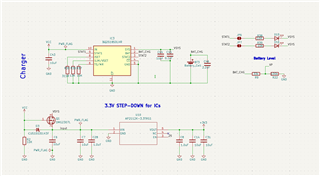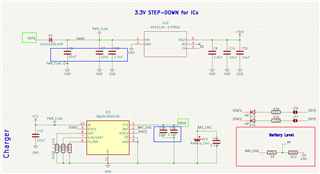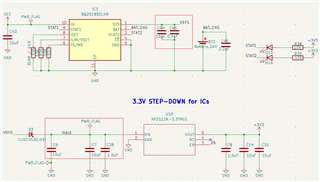Other Parts Discussed in Thread: TLV755P
Tool/software:
Hello everyone,
I'm replacing the battery charger model in order to have a more flexible version to also connect to solar panels to charge battery at 1000mA.
I have some doubts concerning the connection of SYS to the Q1 (DMG2307L).
Additionally, I consider keeping the STAT1 and STAT2 disconnected by default avoiding the connection to a LED.
Are those solutions correct? The schematic, in general, looks correct (resistor and capacitor values, and connections) ?




